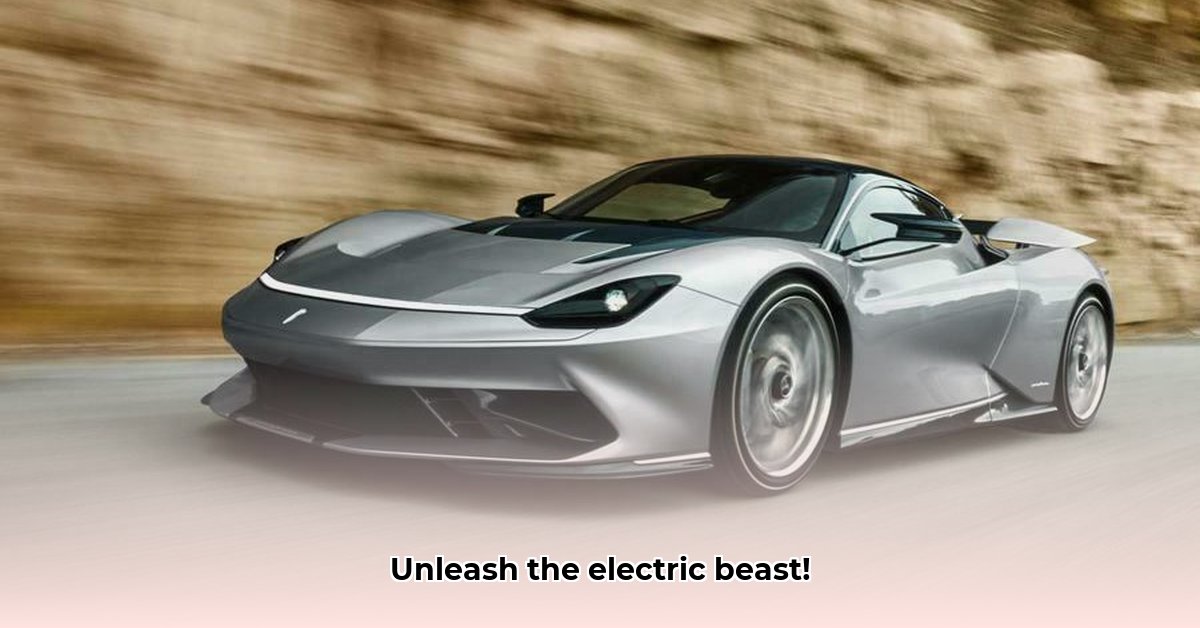
2024's Electric Speed Demons: A Performance Review
The electric vehicle (EV) landscape is exploding with speed. Forget the image of slow, silent cars; 2024's EVs are shattering expectations, achieving 0-60 mph times under three seconds. But what truly makes these cars so fast? This review dives deep into the performance of leading EVs, examining the factors that contribute to their blistering acceleration and exploring the long-term implications for battery life and performance.
Beyond the 0-60 Numbers: Deconstructing Acceleration
While manufacturers often boast impressive 0-60 mph times, it's crucial to understand the nuances. Testing methods, weather, and driver skill all influence results. Road & Track and MotorTrend, for example, might report slightly varying times for the same vehicle. This is because, as MotorTrend's testing protocol often includes detailed analysis of the force applied during acceleration, demonstrating that there are multiple ways to measure the same metric.
Remember, these headline numbers usually represent ideal conditions. Real-world acceleration will vary depending on factors like temperature, tire wear, and battery charge level. A rhetorical question arises: how much do these perfect conditions deviate from everyday driving realities?
Top Contenders: A Look at the Fastest EVs
Several EVs consistently dominate acceleration leaderboards. The Tesla Model S Plaid, with its tri-motor setup, routinely dips below two seconds to 60 mph—a remarkable feat for a production EV. Luxury hypercars like the Rimac Nevera and Pininfarina Battista, with their sophisticated quad-motor systems, are also serious contenders in this exclusive class.
However, the high-performance race extends beyond sleek sports cars. Electric SUVs such as the Rivian R1S and trucks like the GMC Hummer EV demonstrate that impressive acceleration isn't limited to smaller, lighter vehicles.
The Long Game: Battery Degradation and Performance
While initial acceleration is exhilarating, understanding the long-term impact of battery degradation is crucial. Over time, battery capacity diminishes, affecting both range and acceleration. The rate of degradation depends on charging habits, temperature, and driving style. More research is needed to fully quantify the performance implications over a typical battery lifespan, but what is clear is that this is a key factor to consider when choosing a high-performance EV.
The Future of Electric Performance
The high-performance EV market is dynamic and rapidly evolving. Advancements in battery technology, such as the development of solid-state batteries, promise greater energy density, longer lifespans, and improved safety. These innovations will likely lead to even more impressive acceleration figures and extended driving ranges. The quest for the ultimate electric speed machine is far from over—it's only just beginning!
Comparing the Top Performers: A Data Overview
The following table provides a comparative overview of leading electric vehicles' estimated performance. Remember, these figures are estimates based on various test results and real-world performance can vary significantly.
| Vehicle | Reported 0-60 mph (seconds) | Approximate Weight (lbs) | Motor Setup |
|---|---|---|---|
| Tesla Model S Plaid | Under 2 | ~4800 | Tri-Motor |
| Rimac Nevera | Under 2 | ~4800 | Quad-Motor |
| Pininfarina Battista | Under 2 | ~4800 | Quad-Motor |
| Rivian R1S | Around 3 | ~6000 | Quad-Motor |
| GMC Hummer EV | Around 3 | ~9000 | Tri-Motor |
How Long Do Electric Car Batteries Last Before Affecting Acceleration?
Battery degradation is a critical factor influencing long-term acceleration. The rate at which this happens varies based on numerous factors.
Key Factors Impacting Battery Life and Performance
Battery Chemistry: Different battery chemistries (e.g., LFP vs. NMC) exhibit varying degradation rates. LFP batteries are generally known for their longevity. This equates to a more gradual decline in acceleration compared to NMC, which offers higher energy density but potentially faster degradation.
Driving Habits: Aggressive driving, frequent fast charging, and exposure to extreme temperatures (both hot and cold) accelerate degradation.
Measuring Degradation: Manufacturers use diverse metrics, making direct comparison challenging. Onboard computer displays of battery health percentage aren't always directly correlated to 0-60 mph performance changes.
Maintaining Peak Acceleration: A Practical Guide
- Temperature Control: Avoid extreme temperatures by parking in a garage or shaded area.
- Driving Style: Practice smooth acceleration and braking.
- Charging Optimization: Follow manufacturer guidelines for charging practices.
- Regular Maintenance: Schedule regular service appointments for software updates and checks.
Considering the above, how can we optimize for both exhilarating initial acceleration and long term performance? The answer lies in both technological advances and responsible ownership.